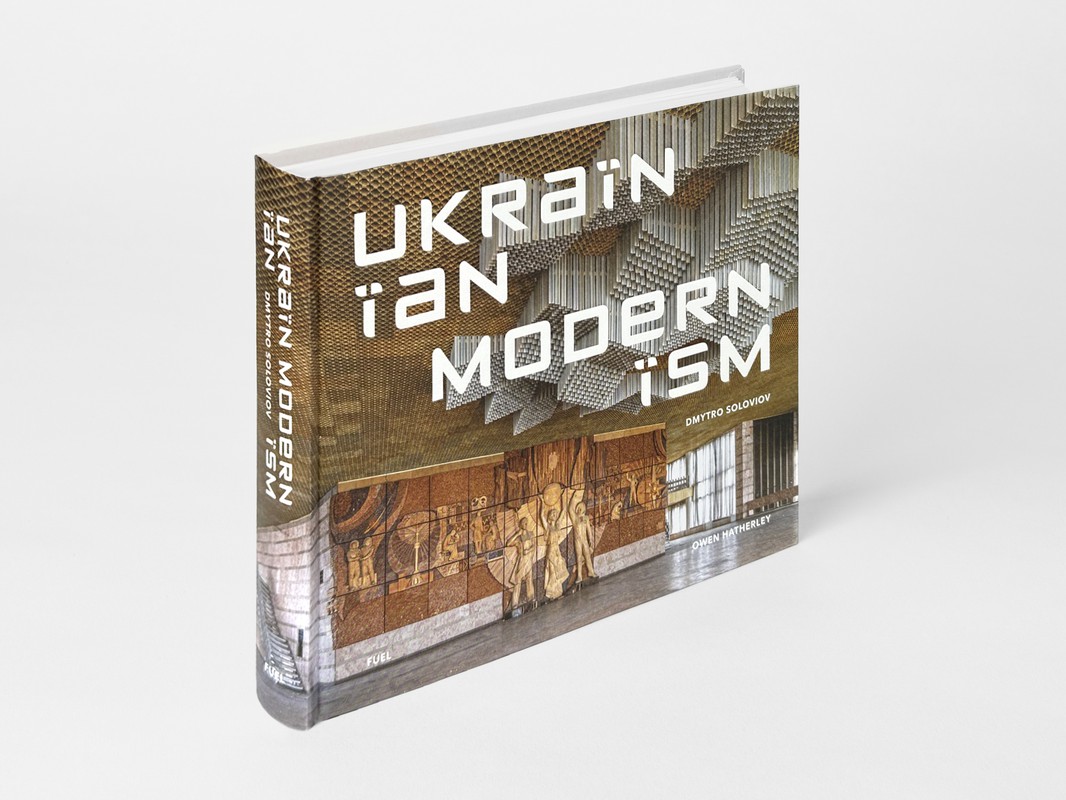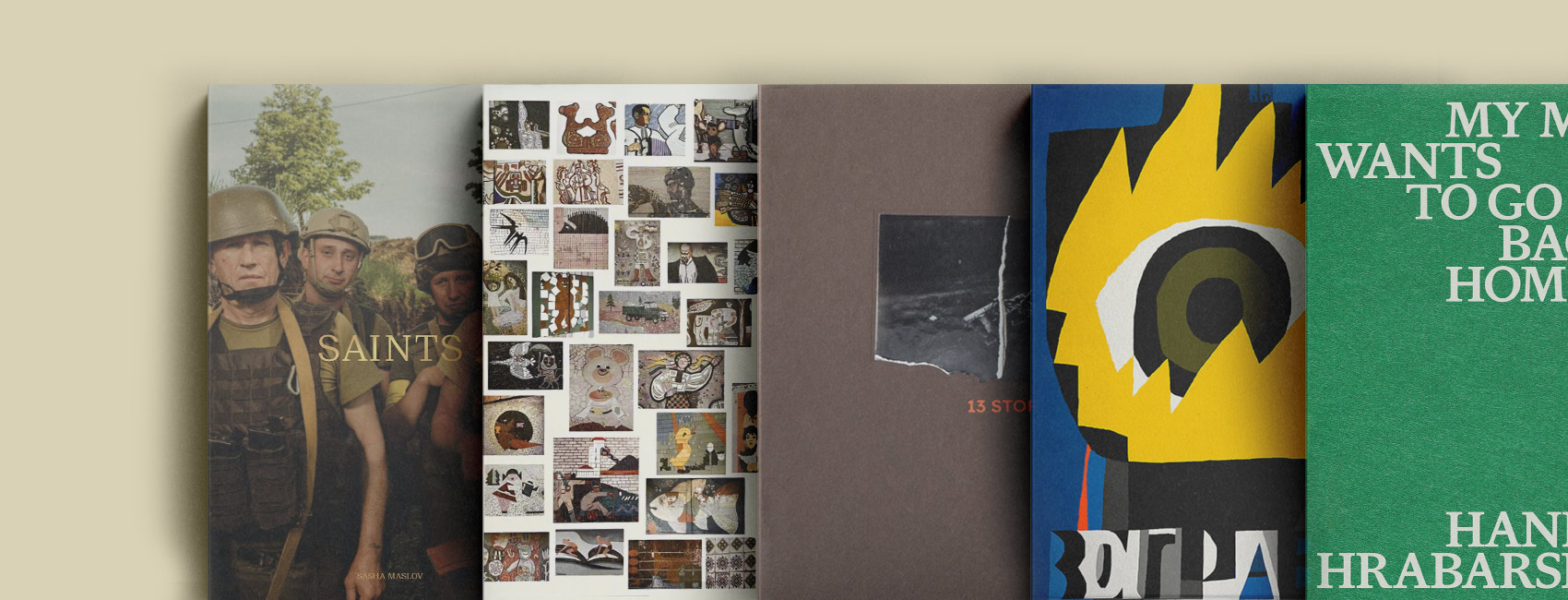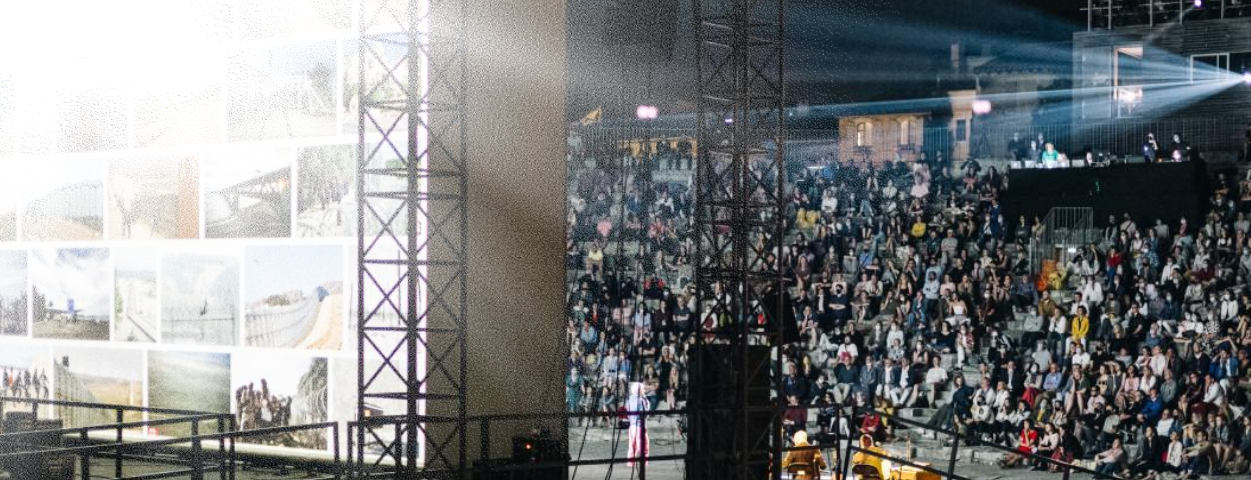* ESC - close the search window
architecture
‘Old Khata Book’: Looking for a place called home
23.02.2024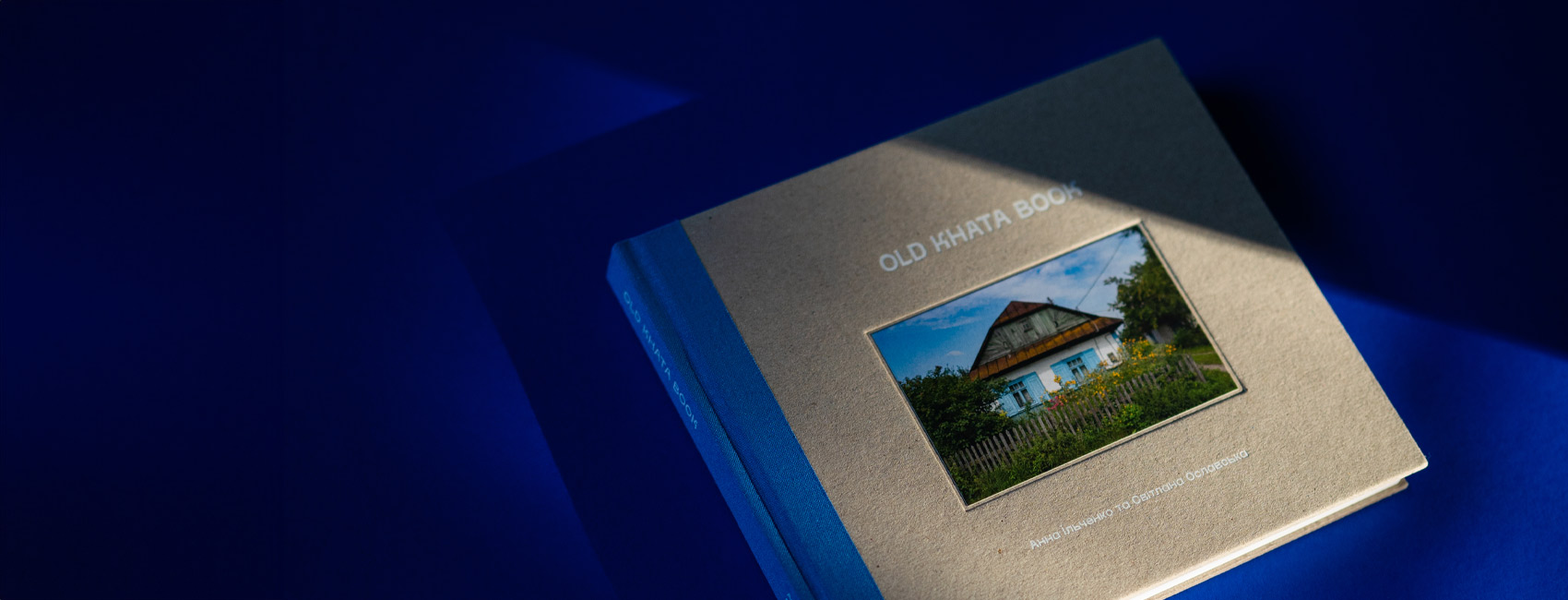
“Old Khata Book” is a book which makes us understand that the world’s perceptions of the typical Ukrainian house, “Khata”, have long ceased to correspond with reality. They are entrenched in ethnographic stereotypes and old photos from Ukrainian villages of ancient times. The Museum of Folk Architecture and Life in Pyrohiv, located in Kyiv, and even the exposition of houses from the 60s-70s, which is also there, can no longer fully communicate what a modern Ukrainian house “Khata” is like.
The science nowadays still explores material culture, still documents everyday life, traditions, and their changes over time, but the results of these investigations are not as often presented in popular projects that reach a wide audience. The non-academic nature of the work of Anna Ilchenko and Svitlana Oslavska, in this case, becomes an advantage.
“Old Khata Book” is not a monograph, not a detailed description of expeditions – it is a photo book of colorful impressions from visits to villages in different corners of Ukraine, an attempt to see beauty in the everyday, in manifestations of material culture, the value of which may some may doubt.
The word “khata”, which in Ukrainian means “private house”, outgrew its original meaning a long time ago. When we say “khata”, we usually refer not just to a dwelling, but to a very specific Ukrainian mode of private life, a space that can be called a home, a place we are accustomed to returning to. Most number of Ukrainians spent their childhoods in “khatas”, some of them lived there since they were born, others went there on holidays to visit grandparents, growing with the feeling of nostalgia. The “khata” in Ukrainian literature and cinematography is a symbol of prosperity, security, as well as of private freedom and independence. Perhaps, by its importance and semantic plurality, this word can be compared to the Spanish “casa,” which has also always been something more than just a house or a home.
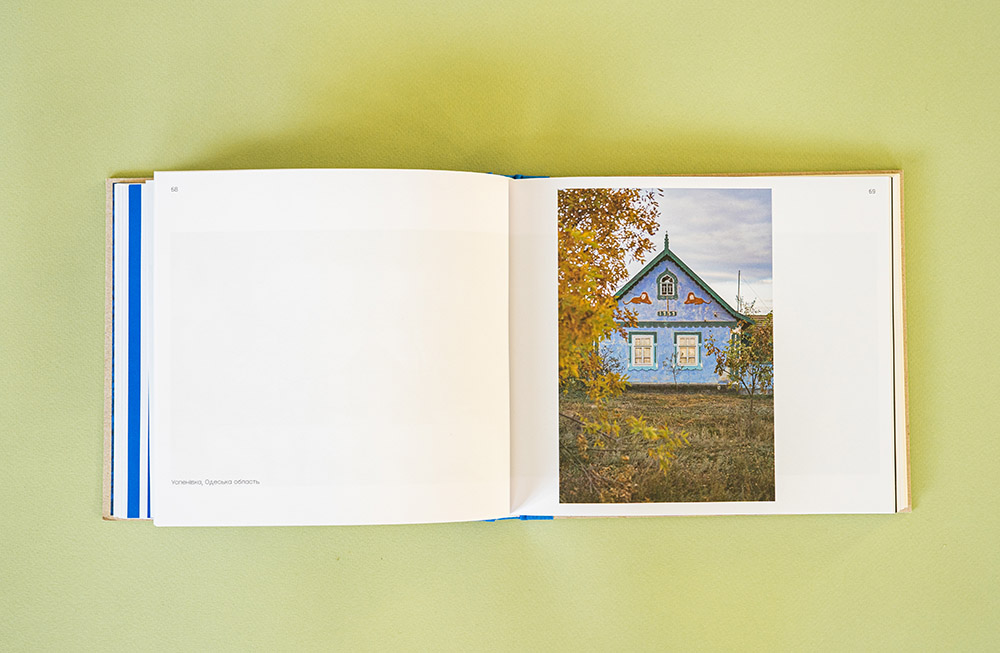
As the authors themselves note in the foreword to the book, it took three years of expeditions to various settlements in Ukraine to collect the material for the photobook. Throughout this time, their motivation was to learn more about Khatas as part of Ukrainian culture and shed light on this topic for others. However, not everything made it into the book. Svitlana and Anna collected a huge amount of material, which gave them the freedom to choose and construct a specific visual-textual narrative. Much of what did not make it into the publication can be found on their Instagram page, as the book is just a part of a larger project dedicated to the phenomenon of the Ukrainian Khata.
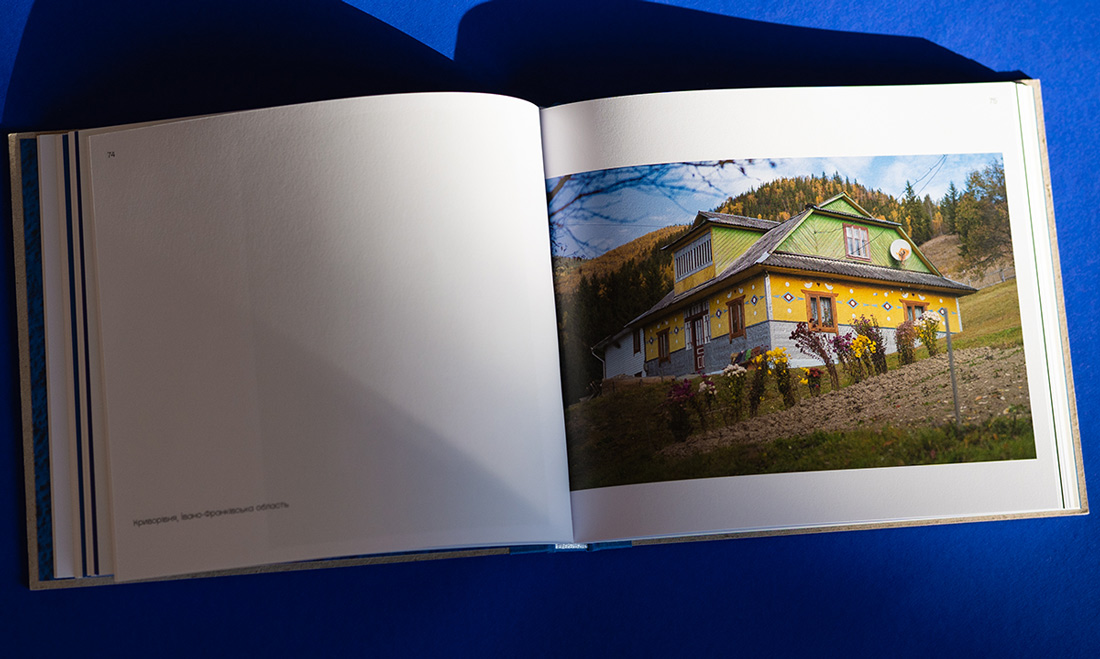
It’s pretty obvious that when the Ukrainian poet Taras Shevchenko wrote in his famous poem “A cherry orchard by the house”, it was not some documentation of facts, but rather a romanticized image of “khata”, he meant something more. It’s an idyllic ethos of Ukrainian private life. Sometimes this garden is not full of cherry trees but of apple ones. The private areas of Ukrainians can have a very wide range of variations. Sometimes there may be a garden near the house, and sometimes there may not be one at all.
RELATED: Read a poem “A cherry orchard by the house” translated by Boris Dralyuk and Roman Koropeckyj or “Beside the house, the cherry’s flowering” in Vera Rich translation
While the house may be nestled in the vastness of a green valley, not separated from the world by any fences. In some places, it’s still a whitewashed mazanka (traditional Ukrainian countryside dwelling made out of clay), while in other cases it’s a wooden house painted in various colors, adorned with intricate carvings. The construction depends on the region, the available materials, but most importantly, on the people themselves, for whom housing becomes not only a utilitarian object, but also an expression of their character, their way of life, and their ideas of beauty.
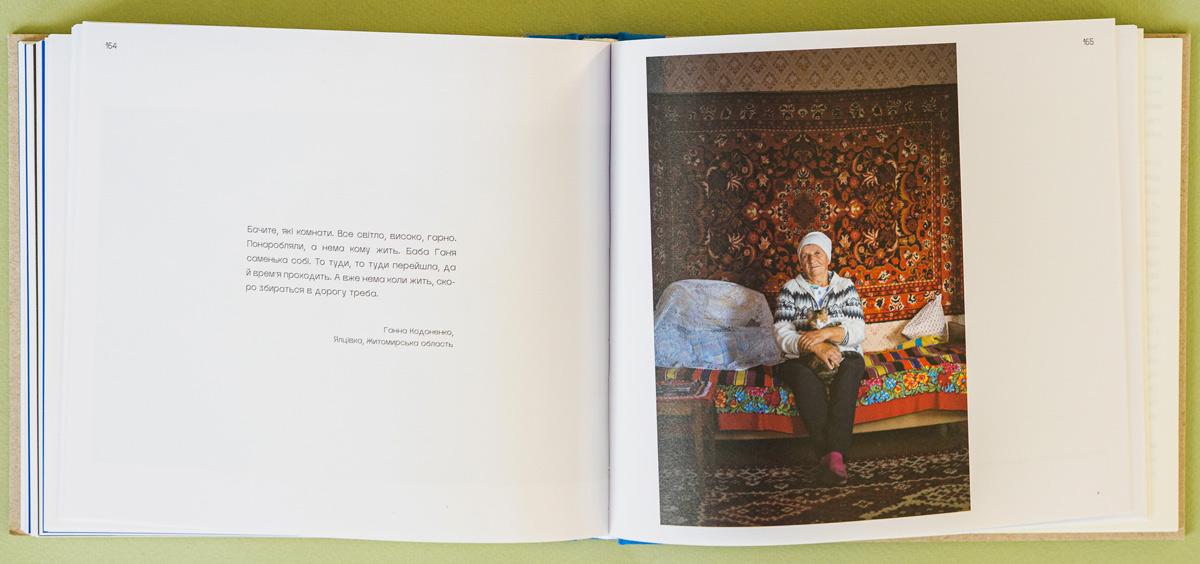
The photographs of houses in this book are perceived more as the result of a photo-safari than architectural photography. It’s like capturing elusive, colorful creatures that have descended from the naive paintings of a well-known Ukrainian folk art painter Maria Prymachenko. Rare moments when they were caught asleep in the steppes, in the highlands, under large old trees, or amidst clusters of pink flowers. They are alive, they dream, they change and breathe, and all this happens with the participation of the people who live nearby.
“As long as people live, the house lives”, says Petro Mikhidenko from the village of Yaltsivka in the Zhytomyr region. This is another important component of the publication that complements the visual narrative – quotes from residents who live in these Khatas. Sometimes these are domestic reflections related to the dwelling, its history, or its current condition, and sometimes they are almost pantheistic or philosophical insights. Indeed, it is hard to argue that for the inhabitants of villages, nature sometimes acquires special significance. The khata is not just the backdrop of the existence of a man-made space, but also an environment with which one has to reckon, learn to interact and coexist.
The khata itself shouldn’t be alone. There should be a tree near the house. It both serves as protection and smells good. One should worship this tree. You come, make the sign of the cross, bow three times. ‘Lord, holy tree, grant health, peace, patience, and tranquility to our Volosivtsi-Village, Forest Street,’ that’s what I’ve been told, and that’s what I do. It gives health, patience, and success. Holy tree.
– Vira Tokaryuk, Volosivka, Zhytomyr region
Sometimes there’s even more nature in the photos than architecture. Khatas appear in different seasons and times of the day. Covered in white snow, lost among trees, or yellowed by the evening sun, which falls on fields and roofs. The colorful masses of landscapes emphasize the silhouettes of roofs and lines of fences. If you relax your eyes, the houses, especially the most colorful ones, appear as abstract colorful accents on the canvas.
Generally, colors are extremely important for this book, and it’s not limited to what we see in the photos. The authors of the “Old Khata Book” even mention in the preface the blue color as a component of house decoration, which is found in all regions of the country. Ukrainians love the color blue; they use it to paint window frames, doors, roofs, and enjoy adding a blue pigment to lime. This color, alongside white, has become dominant for the publication. Blue is the color of the sky, freedom, and closeness to nature. The design of the book begins with a blue fabric, glued onto rough cardboard with sharp-cut edges, and its texture and lack of artificial coloring – whether we want it or not – instantly evoke images of a freshly plastered wall awaiting a new layer of spring lime. The photos and quotes inside the book are arranged on a concise white background. Occasionally, blue reminds of its presence with special triptych spreads, with which Anna Ilchenko and Svitlana Oslavska illustrate the similarities in the decoration of Khata’s elements in different villages.
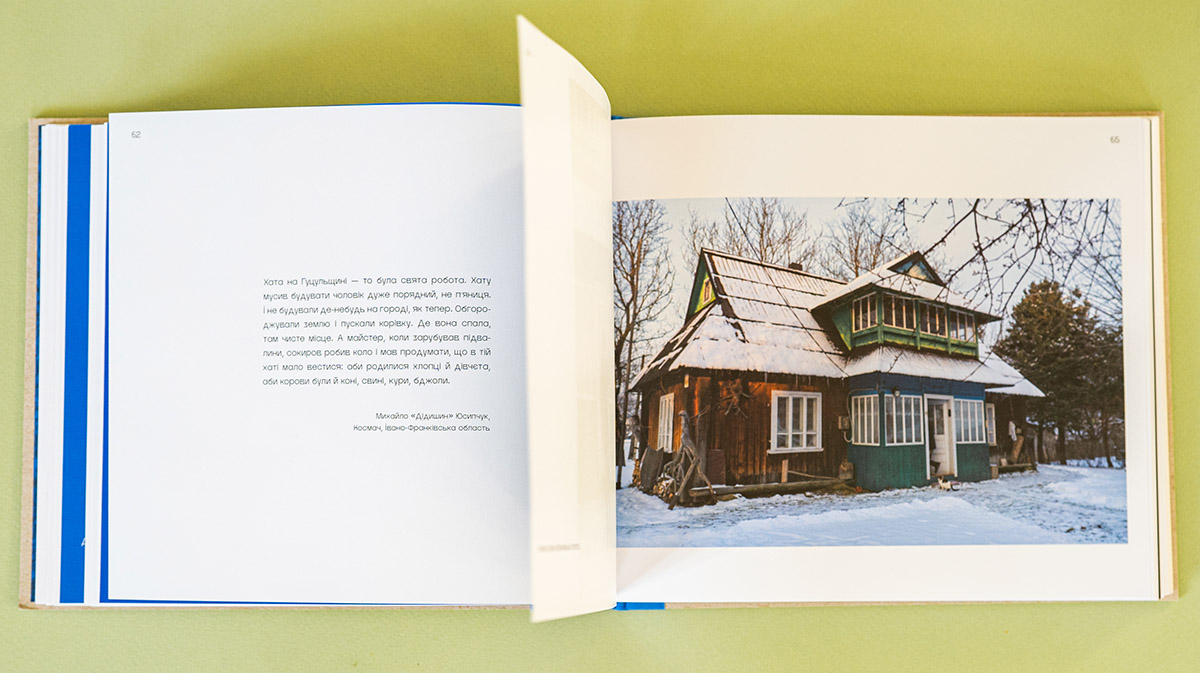
Perhaps someone expected this book to have a normative structure, for example, organizing the photographic material into separate sections by region, but there’s nothing like that here. The immediate transfer from one corner of Ukraine to another helps to understand how diverse and similar Ukraine is at the same time.
Everyone has their own approach to decorating their Khata, and, in different regions, there are different habits for organizing the surrounding space. But it’s noticeable that all of this is primarily local peculiarities. When you see the overall picture, you clearly understand that all these places are part of one cultural space, unaffected by changes in borders or geopolitical circumstances.
Color conveys emotions and moods. A block with black pages sharply and contrastingly cuts into the book. Similarly, war has abruptly entered Ukrainian village life. The authors remind us that some of the villages they visited are already destroyed, and perhaps the “Old Khata Project” will become one of the few archives where the memory of places that have disappeared from the map of Ukraine because of Russia’s attack will be preserved.
The apple tree saved the house. If not for it, it would have been hit directly, and there would have been no house. Now, for as long as I live, I won’t cut it down. Let it grow, and I’ll hang a plaque – it will be like a monument.
– Mykola Arenchak, Lukashivka, Chernigiv region
The black pages are entirely dedicated to people who have witnessed war or russian occupation, and this is understandable because when it comes to preserving life, material culture (whatever it may be) has to take a back seat. Here we don’t see Khatas, but we see people speaking, testifying, sharing their experiences with readers-viewers.

Old buildings are destroyed not only by war but also by time. Svitlana and Anna say that this is especially noticeable when you come across old clay houses without owners – they gradually return to where they came from – sinking into the ground. Even buildings that have not been left unattended will change beyond recognition over time. Reconstructions, repairs, the desire to update the facade with modern materials, and a rethinking of aesthetic preferences – all these are inevitable components of modern Ukrainian “folk” construction. How should one approach this? Is it destruction, development, or perhaps the creation of something new? As many people, as many answers, but hardly will the Ukrainian houses, Khatas, freeze in immutability like a museum exhibit. They will live, change, and leave traces of new and new generations, retaining in numerous decorative and utilitarian elements the spirit of the times, and most importantly – they will preserve their main function, namely, being a shelter for people, being a place called home.
RELATED: The best Ukrainian literary classics available in English translations
Translation: Polina Hrychanyk
Editing: Olena Pankevych, John G Sennett
This publication is sponsored by the Chytomo’s Patreon community

